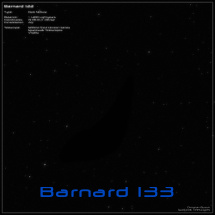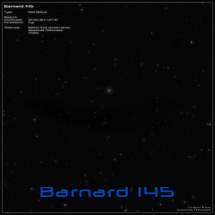
Dark clouds or dark nebulae are large areas of interstellar matter that block light from stars behind them. The sky background may appear very star-poor
in these places, depending on the density of the cloud. Dark clouds can take all sorts of shapes - ranging from round clouds to elongated tubes that curve
across the sky. Dark clouds range in extent from a few light-years to 150 light-years for the largest ones.
The density of a dark nebula can be indicated by an opacity scale. The higher the value, the more opaque the cloud is to light from stars behind it. In the
densest regions, up to 300 molecules per cm³ can be found. This may sound like a lot, but it is extremely little. Even in the ultra-high vacuum on Earth,
one cubic centimeter still contains between 10,000 and one billion molecules. Nevertheless, the largest molecular clouds can harbor more than a million
solar masses, making them some of the heaviest objects in the universe.
Temperatures in dark clouds range from 7 to 15 Kelvin, which is roughly equivalent to -260°C. So they are only a little warmer than the cosmic background
radiation with a temperature of 3K.


